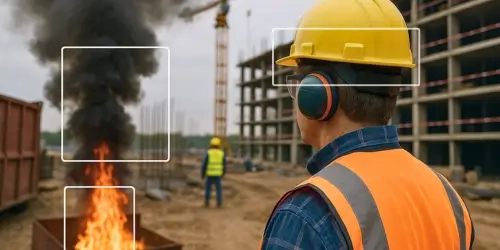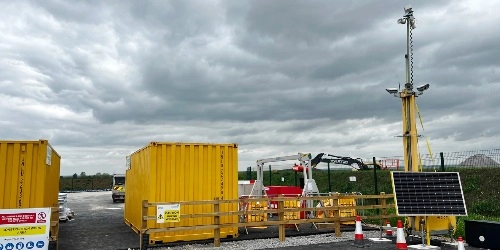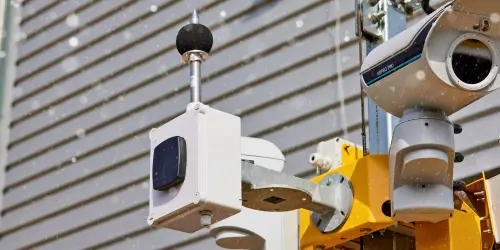Rapid Deployment CCTV Towers are fast becoming the preferred security solution for public surveillance across the United Kingdom. With rising incidents affecting public spaces, councils are turning to advanced surveillance solutions to provide 24/7 protection and maintain community safety.
But installing a CCTV Tower isn't as simple as setting it up and switching it on. Local authorities must navigate a range of legal and regulatory requirements, from planning permissions to data protection obligations.
This guide explains all you need to know about deploying CCTV Towers legally, so your security stays compliant and effective while avoiding potential legal or compliance issues down the road.
5 Legal Requirements for CCTV Tower Deployment in the UK
Most compliance issues are entirely preventable with proper planning.
For those in the public sector, these 5 legal requirements will keep your CCTV Tower deployment on the right side of UK law:
1. Planning permission and approvals
CCTV Towers that are over 4 metres in height require planning permission from local authorities. This particularly applies to public sector projects and installations on listed buildings or within conservation areas.
To comply with strict regulations, CCTV cameras must:
-
Not exceed 0.75 x 0.25 x 0.25 metres in size
-
Be mounted at least 2.5 metres above ground level
-
Not protrude more than 1 metre from the walls
You’ll also need to complete a Data Protection Impact Assessment (DPIA) and include the name and contact details of a stakeholder who can be reached if the public (or authorities) have any concerns about your CCTV installation. The CCTV system must also be registered with the Information Commissioner's Office (ICO), along with payment of the associated data fee.
For rail industry deployments, further approvals are required. Specific Network Rail Towers must hold a PADS Certificate (PA05/04778) and installations must be carried out by Sentinel-trained, PTS-accredited (Personal Track Safety) engineers.
Non-compliance
Unauthorised CCTV Towers can face planning enforcement action, resulting in removal orders and project delays. Deploying towers without proper authorisation risks having security systems dismantled during critical phases.
2. Data protection and GDPR compliance
Under the Data Protection Act 2018 (DPA) and General Data Protection Regulation (GDPR), CCTV footage is legally classified as personal data. This creates immediate legal obligations if you're operating surveillance equipment in public spaces.
Before installing CCTV, you must identify and document the purpose of surveillance, explaining why it is necessary and how the footage will be used.
Here are the key requirements you need to meet for each law:
Data protection law
All CCTV systems must comply with the 8 data protection law principles:
-
Fair and lawful processing: CCTV systems must be operated transparently.
-
Specified lawful purpose: Data should only be collected for specific purposes.
-
Adequate and relevant: Coverage should be proportionate to security needs.
-
Accuracy: Personal data collection must be kept up to date.
-
Retention and storage: Data shall not be kept for longer than is necessary.
-
Processing: Data must be processed in accordance with the Data Protection Act and General Data Protection Regulation.
-
Protection: Protect footage from unauthorised access with proper safeguards.
-
No transfers: No personal data shall be shared outside the European Economic Area unless that country follows adequate data protection laws.
General Data Protection Regulation (GDPR) UK
Under GDPR, you must meet these specific standards:
-
Process CCTV footage fairly and within the law.
-
Record only for clearly documented security purposes.
-
Maintain accurate, working camera systems.
-
Delete footage after a reasonable time period.
-
Protect against data breaches and unauthorised access.
-
Respect individuals' rights to access and question their data.
Non-compliance
Failure to comply with DPA and GDPR data laws can result in fines, legal action and, in severe cases, criminal convictions. Data privacy laws are taken very seriously by the ICO, with breach penalties including fines up to £17.5 million or 4% of annual turnover.
3. Signage and public notification
UK privacy laws require clear signage to inform the general public that they’re being recorded.
To comply, you must:
-
Position signs at all entry/exit points and monitored areas.
-
Include business name, surveillance purpose and contact information.
-
State "CCTV surveillance in operation for safety and security purposes".
-
Use waterproof materials suitable for outdoor deployment.
-
Make signs visible in all lighting conditions.
Non-compliance
Without clear signage, your CCTV system may breach data protection laws detailed in DPA and GDPR. If people don’t know they’re being recorded, they can exercise their data rights, which could lead to fines or legal challenges.
4. Surveillance camera codes of practice
Beyond data protection obligations, 2 important codes of practice provide actionable guidance for operating commercial CCTV systems legally in the UK:
- Information Commissioner's Office (ICO)
The ICO code offers guidance on:
-
When surveillance systems are actually necessary.
-
How long to keep CCTV footage and when to delete it.
-
Handling requests from people who want to see footage of themselves.
-
Choosing the right type of surveillance equipment for your needs.
-
Maintaining proper oversight and being transparent about your surveillance practices.
- Home Office Surveillance Camera Code of Practice
Issued under section 30 of the Protection of Freedoms Act 2012 (PoFA), the Surveillance Camera Commissioner Code of Practice offers comprehensive guidance on:
-
Proving your CCTV system is justified and proportionate.
-
Understanding people's privacy rights.
-
Being open about your surveillance activities and maintaining proper oversight.
-
Developing clear policies and procedures for your CCTV operations.
-
Storing footage securely and appropriately.
-
Controlling who can access recorded footage.
-
Keeping accurate records of your surveillance activities.
Non-compliance
While codes aren't mandatory, following them demonstrates due diligence and best practice. Failure to adhere to them can weaken or complicate your legal defence if your CCTV system is challenged, leading to disputes or penalties.
5. Ethical considerations
Whether CCTV is required for public spaces or as a temporary solution during events, the key ethical challenge is finding the right balance between effective security and respecting people's privacy and dignity.
Here are the main ethical boundaries you need to respect:
-
Non-work areas: Placing CCTV cameras in private, "non-work" zones, such as toilets and changing rooms, is a clear violation of the Voyeurism Act 2019, which applies in both England and Wales.
-
Footage beyond premises: Surveillance extending your boundaries must be justified for legitimate reasons such as fly-tipping prevention or tackling anti-social behaviour (ASB).
-
Request access: Under data protection law, individuals have the right to obtain CCTV footage of themselves through a Subject Access Request (SAR). If such a request is made, you must provide footage free of charge within 1 calendar month.
Non-compliance
Ethical data breaches can result in legal action from affected parties, regulatory investigation and significant reputational damage.
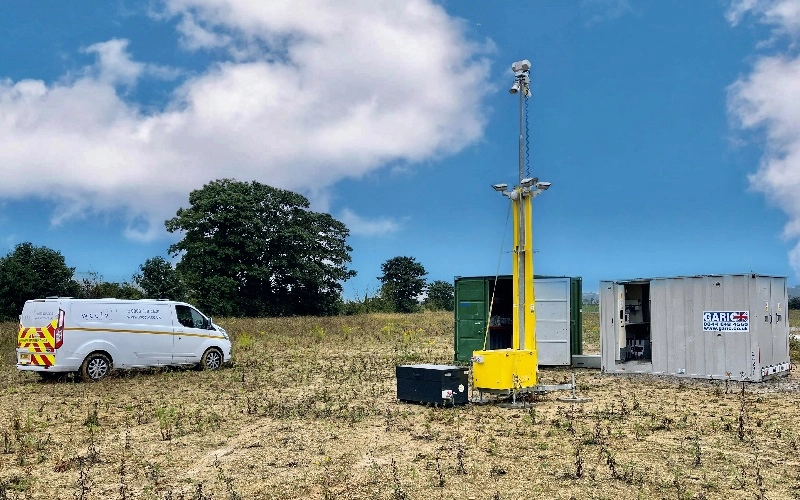
6 Best Practices for Legal CCTV Tower Deployment: The WCCTV Approach
Our fully-managed deployment process keeps your CCTV Towers compliant from start to finish, covering everything from installation to ongoing support.
Here’s how we handle legal CCTV Tower deployments across the UK:
1. Site assessment
Our CSCS-accredited engineers, operating from 6 regional hubs across the UK, will support you in installing cameras to effectively cover your required public spaces. They will assess the area to identify security vulnerabilities and blind spots, ensuring optimal camera angles and positions for your specific needs.
We also check your power supply options and test 4G/5G connectivity to ensure everything integrates smoothly with our remote monitoring services.
2. Stakeholder agreement and approvals
We'll support you through the setup process, ensuring camera angles are positioned and configured to your requirements. This guarantees coverage of the areas you need while creating a transparent audit trail of stakeholder approvals in line with UK regulations.
Our team determines whether security risks are short- or long-term to establish proportionate security solutions for your commercial CCTV installation. This step helps justify the need ("lawful basis") for surveillance at your site, whether it's deterring theft, vandalism, squatters, fly-tipping or other security concerns.
Our Network Rail CCTV Towers hold PADS Certificate PA05/04778 for railway environments, ensuring all installations can be legally used across railways in the UK.
Finally, our systems help to enhance security protocols, which in turn help public organisations develop new policies and procedures to keep their teams informed.
3. Equipment selection
All our CCTV systems meet UK compliance standards and are installed by experienced contractors with a wealth of expertise in wireless security.
We'll suggest the best CCTV system based on your security needs:
-
Thermal Solar Tower: An intelligent, solar-powered CCTV system with thermal and optical cameras that detect and deter criminal activity before it escalates.
-
Smart Tower: A mobile CCTV system built for compound-level coverage from a single unit. Featuring 3 HD PTZ (Pan-Tilt-Zoom) cameras and a drop-down dome, it provides near-360° visibility across various site types and layouts.
-
Solar Fuel Cell Tower: A fully autonomous CCTV Tower designed for long-term deployment on remote or off-grid locations, providing up to 20 weeks of uninterrupted coverage between refills.
-
Eco Towers: Powered by long-lasting batteries, this mobile CCTV unit provides up to 150 hours of consistent surveillance and captures up to 30 days of footage on a single charge. It's ideal for power or environmentally restricted areas.
-
Traffic Management Tower: A legally compliant CCTV system designed for highways and carriageways. Featuring 2 fixed CCTV cameras and a PTZ incident review, all footage and real-time alerts are transmitted wirelessly and stored securely for later viewing.
-
Network Rail Tower: A PADS-approved security system providing live and recorded video, remote access and proactive detection for trackside works, depots and project compounds.
-
The Hornet: A perimeter intrusion detection (PID) unit with a near-360° field of view, motion-triggered video capture and live audio challenges. Ideal for urban settings where hard-to-cover locations like narrow alleyways make it nearly impossible for Towers to reach.
4. Legal compliance
Our detailed CCTV GDPR guidance keeps you compliant with data protection requirements. All of our highly-trained engineers demonstrate their expertise in public sector safety and competence. For rail projects, our installers carry PTS qualifications, the mandatory prerequisite for working on or near railway tracks in the UK.
Our senior engineers also hold specialised certifications, adding expertise across various location types and installations for complete compliance and peace of mind.
5. Data handling and access control
Our remote monitoring service transmits video footage securely via 4G/5G networks with end-to-end encryption to NSI Gold-Accredited monitoring centres.
From there, trained security personnel monitor your surveillance in real-time and, when necessary, trigger a rapid response to mobile keyholding teams. These experts are aware of data protection and evidence handling laws, keeping your CCTV footage protected at every stage.
At the core of this system is our Stellifii software, a cloud-based ecosystem that goes beyond standard Video Management System (VMS). Accessible at any time, this legally-compliant service is your single point of control for footage, compliance reports, software diagnostics and system configurations. It also integrates seamlessly with existing control rooms, ensuring new deployments enhance rather than disrupt established monitoring processes.
Read more: Understanding Data Storage Options for CCTV Tower Footage
6. Performance management and regular review
As we just mentioned, the Stellifii platform gives you complete system management oversight for ongoing legal compliance and systematic monitoring.
Our Heartbeat software provides automated diagnostics and incident reporting, with 90% of issues, like recording problems, resolved remotely. This significantly reduces maintenance costs and keeps systems running smoothly.
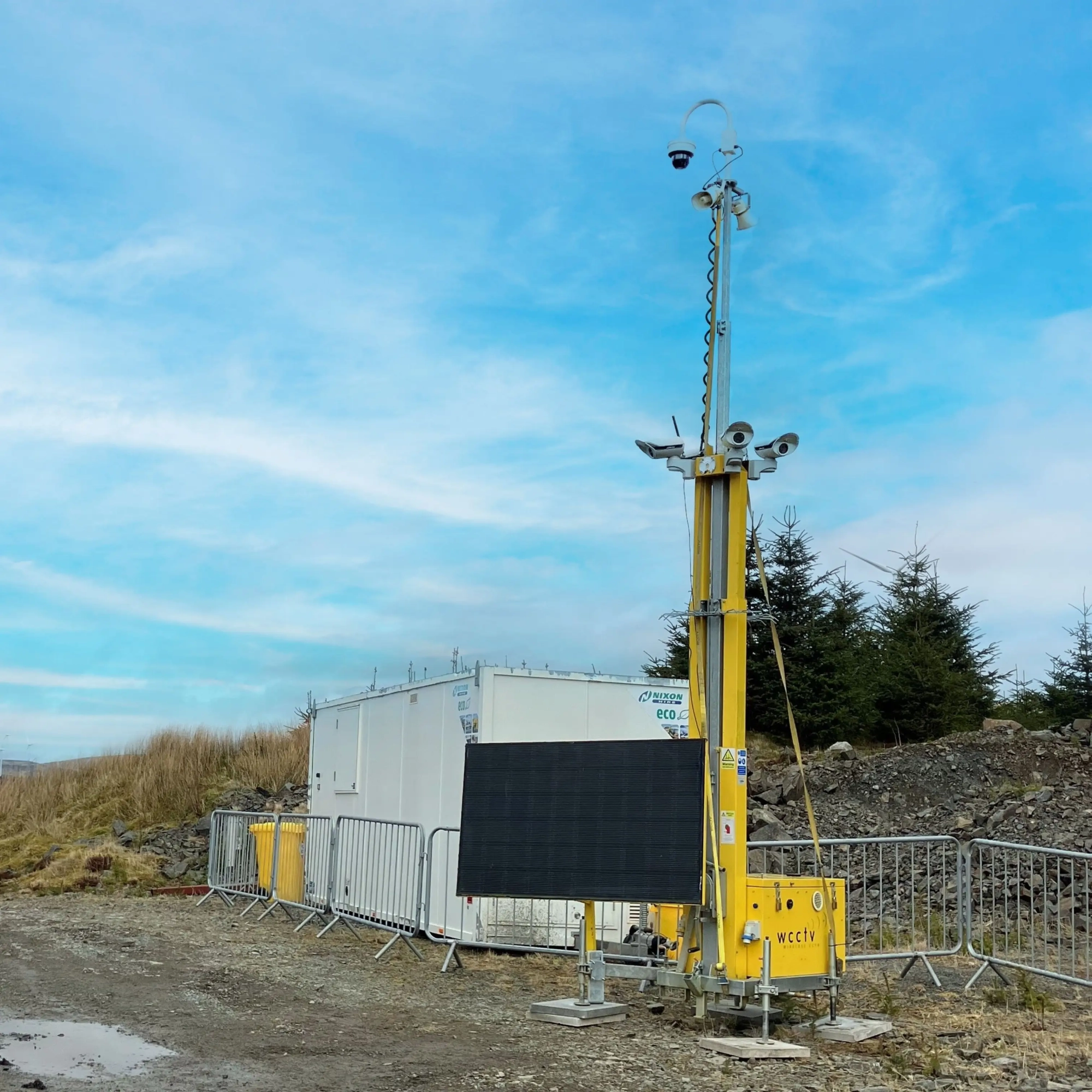
Install Legally Compliant CCTV Towers
Navigating CCTV legal compliance doesn't have to be complex when you have WCCTV on your side.
With proper planning and professional support, you can deploy public sector CCTV Towers that deliver robust protection while meeting all legal requirements.
Install CCTV Towers the right way. Contact our team to discuss your security needs today.
FAQs
What is CCTV compliance?
CCTV compliance means following legal and regulatory requirements for using surveillance cameras, including data protection rules, privacy laws and appropriate handling of recorded footage.
How long can I keep CCTV footage in the UK?
In the UK, there are no strict rules for how long CCTV footage can be kept, but generally it's not for more than 30 calendar days.


